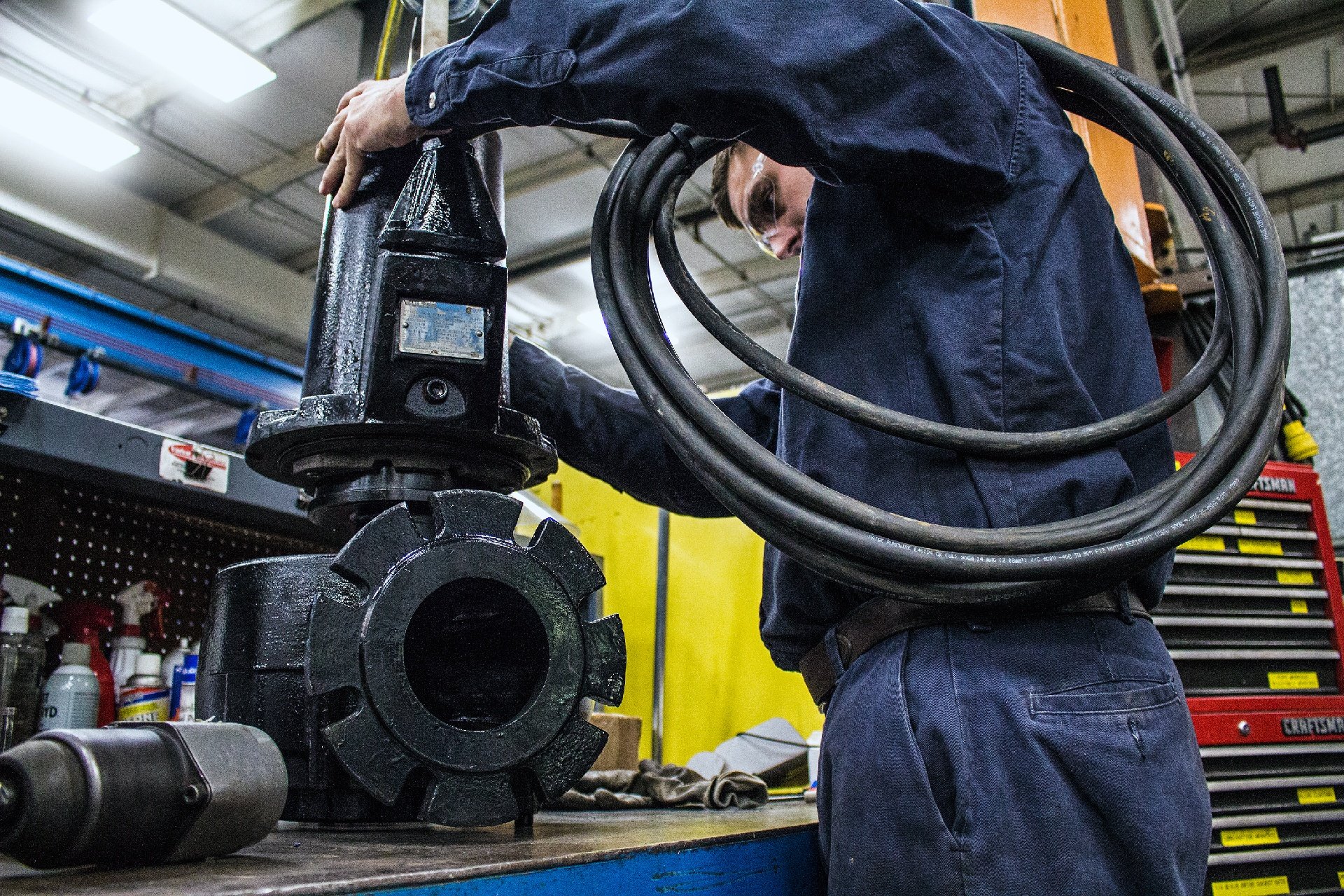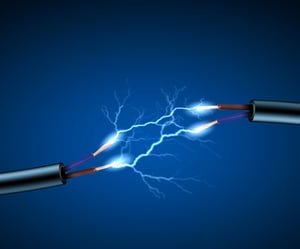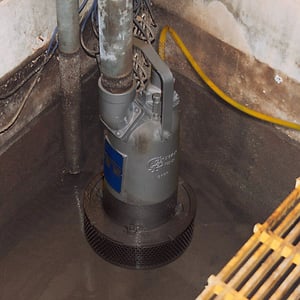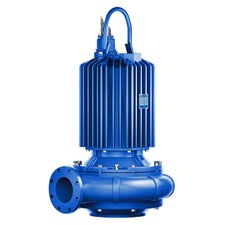
Submersible pumps with persistent reliability issues oftentimes can tie their problems back to an installation oversight. Proper installation is especially important for submersible pumps, given they’re installed in pits or tanks, making it difficult to access them.
Here are 6 quick tips for safely installing and maintaining submersible pumps. Here’s what you need to know.

This should go without saying, yet bears repeating. Shut down and lock out all related energy sources before performing maintenance. According to OSHA, 120 fatalities and 50,000 injuries are prevented each year due to following proper lockout/tag-out procedures.
Many pumps are equipped with automatic thermal overload protection which may allow an overheated pump to restart unexpectedly. Ensure there is no power going to the pump before attempting to work on it.
 The risk for falls around wet wells and tanks is real, especially during the winter months. When working around wet wells or tanks, use fall protection safety procedures. This could include railing, access cover fall arrest nets or cages, or body harness with lanyard.
The risk for falls around wet wells and tanks is real, especially during the winter months. When working around wet wells or tanks, use fall protection safety procedures. This could include railing, access cover fall arrest nets or cages, or body harness with lanyard.
It’s advisable that permanently installed submersible pumps mount on a base elbow with a rail system for retrieval. Not only is installation on a solid mount and foundation good for the long-term health of the pump, but it’s also good for the long-term health of operators.
Entering a wet well requires protective equipment and proper training to ensure an operator’s safety. Guide rails allow easy removal of pumps from wet wells without the need for operators to enter the wet well.
Each rail system has a rail adapter that bolts to the discharge of the pump. That rail adapter is designed to slide down the rails and interlock with the base elbow.
Use stainless steel anchors, hardware, and rails, plus new gaskets. Make sure the base elbow is anchored securely. If your wet well or tank is greater than 20’ deep, use a mid-rail (or intermediate) adapter to keep the rails aligned. Take up all the slack on the pump cord(s) and restrain them tightly so they can’t be sucked into the pump.
Ensure the basin and pit are capable of supporting the weight of the pump and guide rail.
Always verify that the pump nameplate, amps, voltage, phase, and HP ratings match the control box and power supply. Incorrect voltage or phase can cause fire, motor, and control damage, and will likely void the warranty on the pump.
Believe it or not, you can accidentally install a pump in such a way that the impeller runs backward. This is a problem that commonly occurs during the installation of a new pump, motor, changing a starter, or adding a VFD.
Do not place hands in the pump suction to check motor rotation. This can cause severe personal injury.
Pump installation professionals run a “bump test” to ensure the shaft turns in the right direction. In a bump test, the installer quickly turns the pump on and off to check the direction of the shaft rotation.
As viewed from the top, the impeller should rotate in a counterclockwise direction. If the impeller is rotating in reverse with a three-phase motor, have an electrician switch any two power leads to correct the rotation.
The pump will still generate flow even if the impeller runs in reverse. However, expect the pump to generate less flow and lower amp draw. This can also shorten the life of the pump assembly.
 Lifting, carrying, or hanging the pump by the electrical cable can damage it. Damaged cables can cause shock, burns, or even death.
Lifting, carrying, or hanging the pump by the electrical cable can damage it. Damaged cables can cause shock, burns, or even death.
Instead, lift using the lifting points built into the submersible pump. Use proper rigging gear and adequately sized chain attached to designated locations on the pump.
If the submersible pump was running hot, the seal oil may be under pressure. Do not remove plates, covers, gauges, pipe plugs, or fittings from an overheated pump. Vapor pressure inside the pump can cause these parts to eject with a lot of force.
Allow the pump to completely cool before servicing.
Wet wells and tanks add a level of complexity when installing submersible pumps. Use an abundance of caution to protect yourself and others around you. If team members are inexperienced in this area, call a properly trained professional who knows and understands how to safely install submersible pumps.
Need help with a submersible pump installation? Ask us about it! We gladly provide technical expertise to companies and municipalities in Wisconsin, Minnesota, and upper Michigan.
These Stories on Pumps
Headquarters and Service Center
Located outside Green Bay, WI
707 Ford Street
Kimberly, WI 54136
920-733-4425
OptiFlow Design and Build Center
1002 Truman Street
Kimberly, WI 54136
920-733-4425
Burnsville Service Center
12265 Nicollet Avenue
Burnsville, MN 55337
952-444-1949
Grand Rapids Service Center
26489 Industrial Blvd
Cohasset, MN 55721
952-444-1949
© Copyright 2024. Crane Engineering. All Rights Reserved. Privacy Policy.